
The Melanoplinae are a subfamily of grasshoppers in the family Acrididae. They are distributed across the Holarctic and Neotropical realms. They are one of the two largest subfamilies in the Acrididae. As of 2001 the Melanoplinae contained over 800 species in over 100 genera, with more species being described continuously.
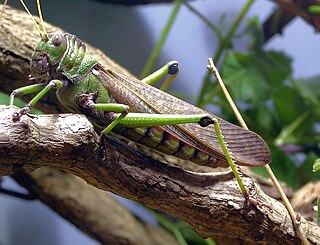
The Romaleidae or lubber grasshoppers are a family of grasshoppers, based on the type genus Romalea. The species in this family can be found in the Americas.
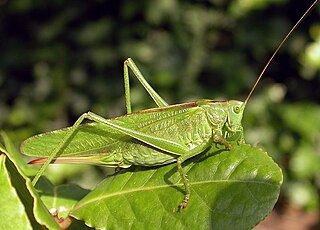
The Tettigoniinae are a subfamily of bush crickets or katydids, which contains hundreds of species in about twelve tribes.
Cohnia is a genus of Neotropical, sickle-bearing bush crickets in the tribe Odonturini, described by Buzzetti, Fontana & Carotti in 2010.

Trigonidiinae is a subfamily of insects in the order Orthoptera, suborder Ensifera, based on the type genus Trigonidium. They are often referred to as sword-tail crickets, winged bush crickets or trigs.
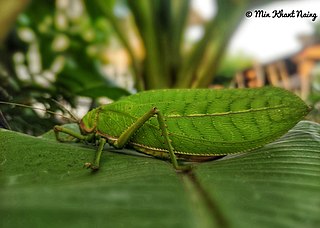
The subfamily Pseudophyllinae contains numerous species in the family Tettigoniidae, the katydids or bush crickets. Sometimes called "true katydids", together with the crickets of suborder Ensifera, they form part of the insect order Orthoptera which also contains grasshoppers.

The Phaneropterinae, the sickle-bearing bush crickets or leaf katydids, are a subfamily of insects within the family Tettigoniidae. Nearly 2,060 species in 85 genera throughout the world are known. They are also known as false katydids or round-headed katydids.
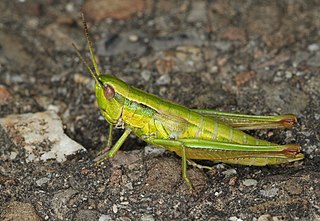
Gomphocerinae, sometimes called "slant-faced grasshoppers", are a subfamily of grasshoppers found on every continent but Antarctica and Australia.

Scudderia is a genus of katydids in the subfamily Phaneropterinae. They are sometimes called bush katydids and are 30–38 mm in length. Their range is most of North America, northernmost being in Southern Canada. They are herbivores, with nymphs feeding primarily on flowers and adults preferring woody deciduous plants.

Typophyllum is a genus of Neotropical, leaf-mimicking katydids or bush crickets belonging to the subfamily Pterochrozinae.
Arethaea is a genus of katydids in the family Tettigoniidae. There are at least 14 described species in Arethaea.

Romaleinae is a subfamily of lubber grasshoppers in the family Romaleidae, found in North and South America. More than 60 genera and 260 described species are placed in the Romaleinae.
Paraidemona is a genus of spur-throated grasshoppers in the family Acrididae. There are about nine described species in Paraidemona.
Turpilia is a genus of phaneropterine katydids in the family Tettigoniidae. There are about nine described species in Turpilia.
Montezumina is a genus of central and South American, phaneropterine katydids in the family Tettigoniidae. There are at least 30 described species in Montezumina.
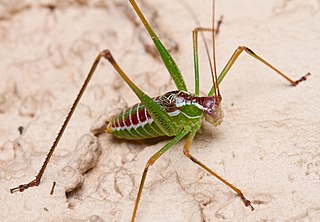
Obolopteryx is a North American genus of katydids or bush crickets in the subfamily Phaneropterinae and tribe Odonturini.

The Ommatolampidinae are a subfamily of grasshoppers in the family Acrididae, found in central and South America, and based on the type genus Ommatolampis. Derived from the "Ommatolampides" used by Brunner von Wattenwyl in 1893, the first use of the name in its current form was by Rodríguez et al. in 2013; this taxon appears to be paraphyletic.
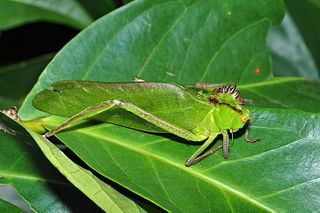
Steirodon is a genus of large phaneropterine katydids in the family Tettigoniidae, native to tropical and subtropical forests in South America, Central America and Mexico.













